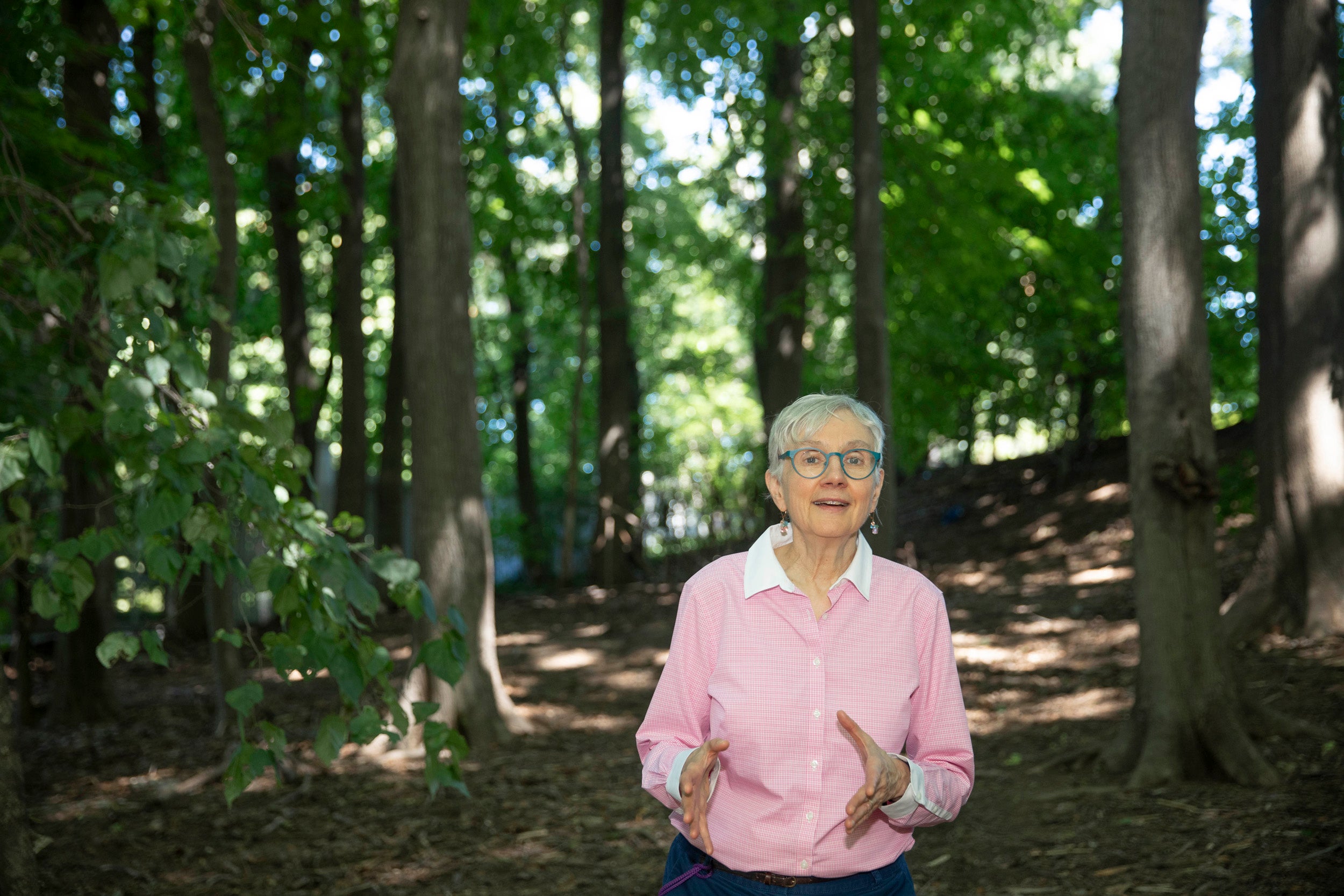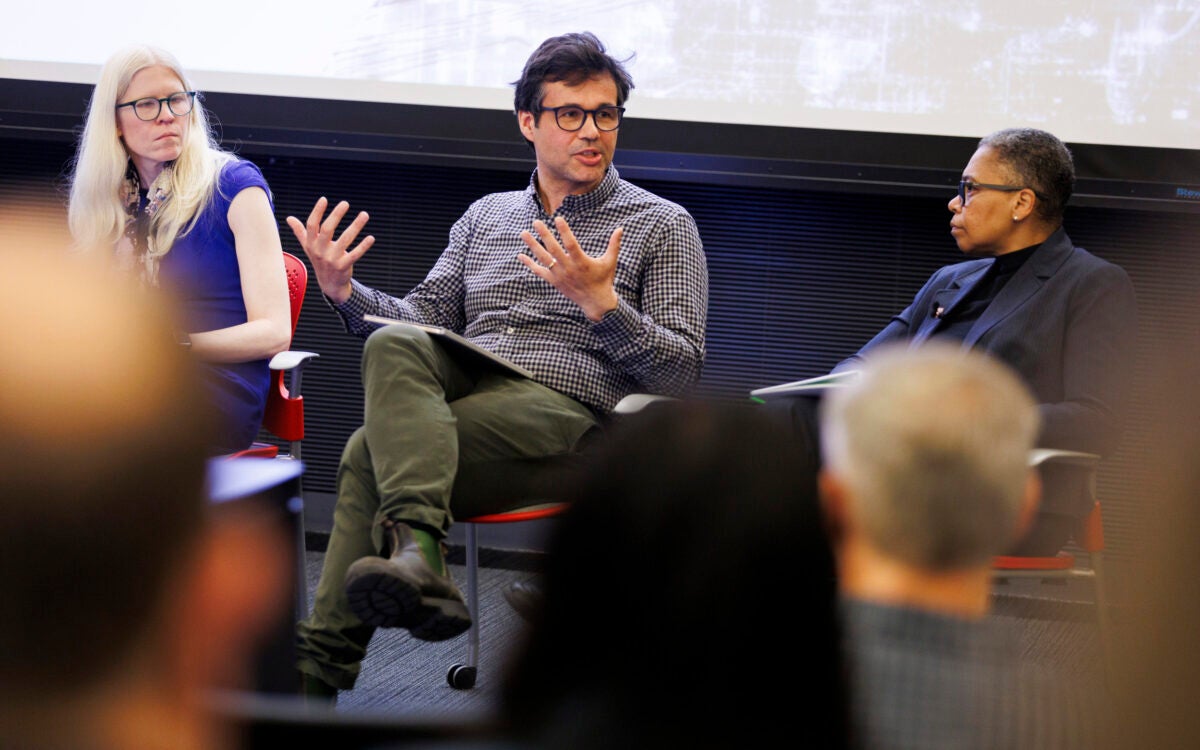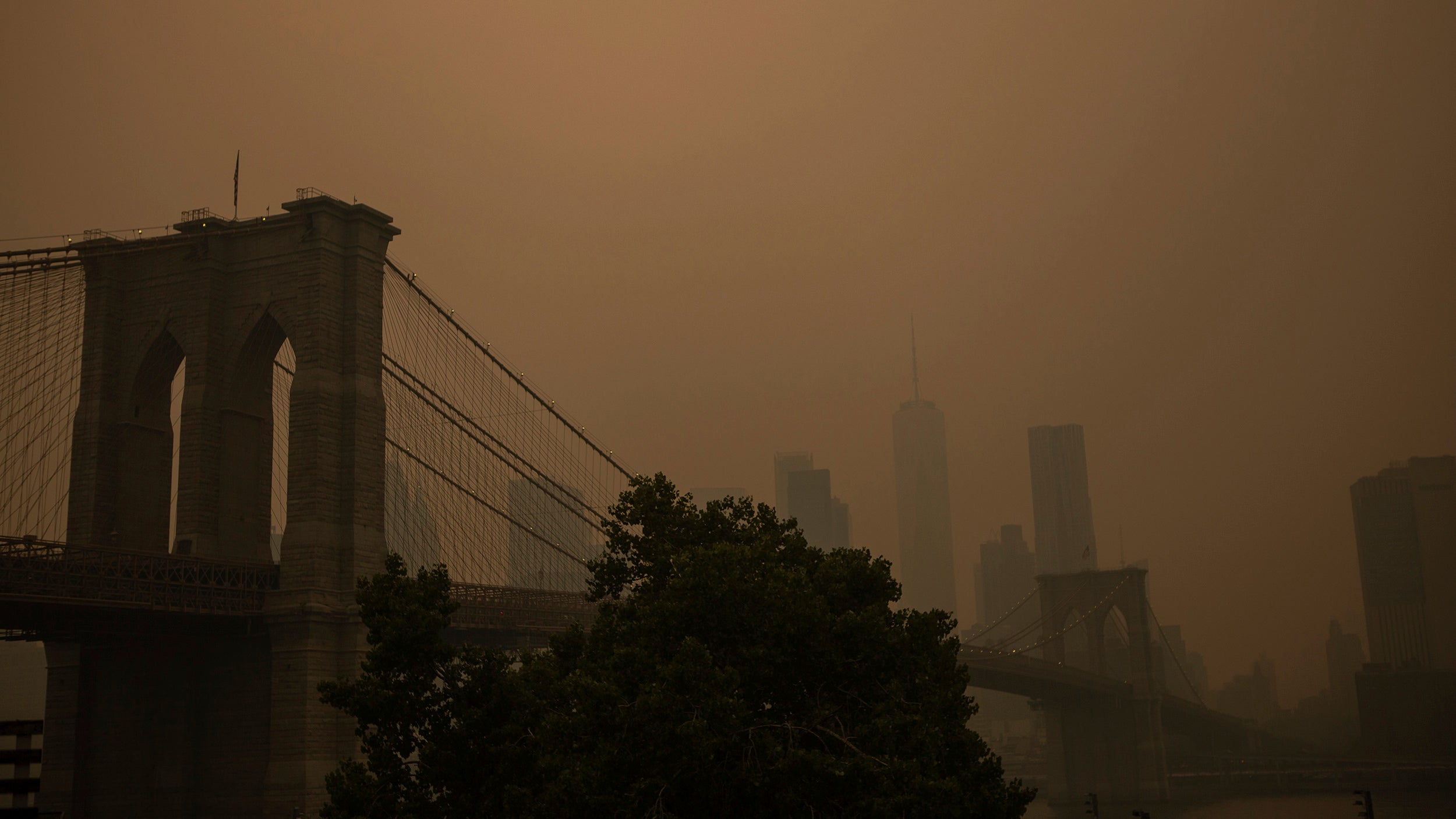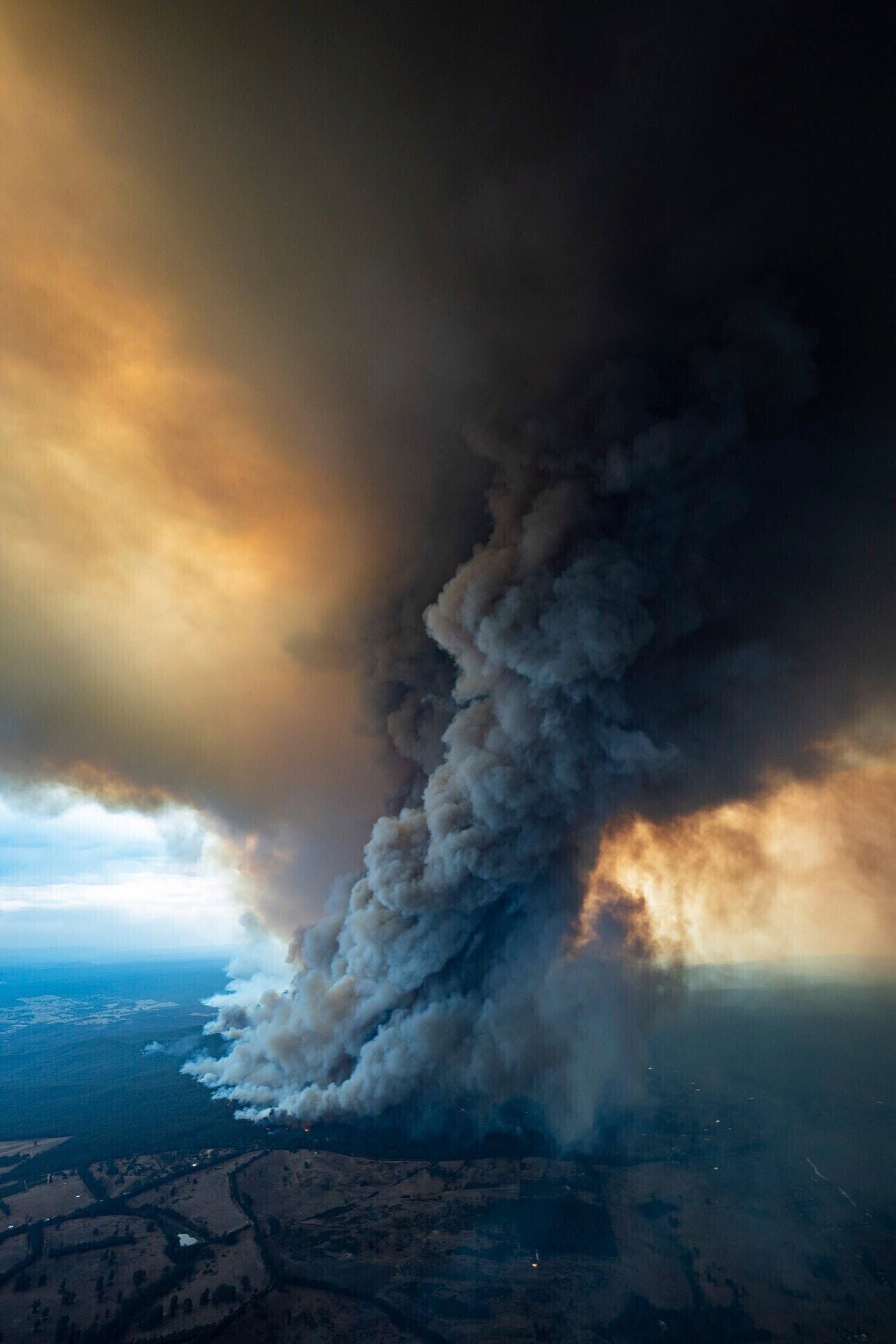
A wildfire burns on the mountainside in West Kelowna, British Columbia, Canada.
Darryl Dyck/The Canadian Press via AP
Wildfires are much worse than a sign of climate change
Expert explains the dual threat posed by a crisis spreading beyond our control
Summer headlines have screamed of climate extremes: Record temperatures, an ocean heat wave, and rampant wildfires, including Canadian blazes that have funneled dense smoke into major U.S. cities.
For Loretta Mickley, a Harvard wildfire expert, the fires present a dual problem: Not only are they a symptom of climate change — becoming bigger, hotter, and more common in regions where they can affect large population centers — but they also make the crisis worse. By burning vast layers of partially decomposed vegetable matter called peat, fires like those in Canada release even more greenhouse gases into the atmosphere.
The Gazette spoke with Mickley, who will chair a National Academies workshop next month on wildfires as a driver of greenhouse gases, about the science behind the threat. The interview has been edited for clarity and length.
Q&A
Loretta Mickley
GAZETTE: How do we expect wildfires to change in the decades to come?
MICKLEY: The consensus is that wildfires will increase in what we call boreal regions —Siberia, northern Canada, and Alaska. With climate change, these regions are warming more rapidly than elsewhere on the globe, and the warmer temperatures will dry out the fuel, leading to increased fire activity. Fire is also predicted to increase in the western U.S. The climate in the western U.S. is historically very variable, prone to dryness, and climate models suggest that we’ll have more frequent droughts and more fire activity there.
In Australia as well as the Mediterranean, there’s also a strong view that fires will increase, again because of warmer or drier conditions under climate change. The fires in Australia in 2019-2020 and in Greece this summer are consistent with these projections.
GAZETTE: So the general sense is more fires and shifting locations?
MICKLEY: Yes, but with a caveat: human activity. While human activity can ignite fires, human changes to the landscape — like roads, cities, even cropland — can impede the spread of wildfires because there’s less fuel. Efforts to suppress fires in populated regions such as the western U.S. have also played a role in this decline. In fact, in the early 2000s, observations showed that fire was decreasing over much of the globe. But there are also these emerging, climate-driven trends, and there is a consensus that out-of-control, intense wildfires will increase in some regions of the globe, imperiling people, animals, and vegetation.

“Typically fires in remote regions in Canada and Alaska are just allowed to burn, but now we’re thinking, ‘This isn’t working. There’s all this smoke. Carbon dioxide is being released. Peat is burning. We need to do something,’” says wildfire expert Loretta Mickley.
Kris Snibbe/Harvard Staff Photographer
GAZETTE: And the fires we’ve seen in the U.S. and around the world this summer are consistent with that consensus?
MICKLEY: For the most part. The fires in Quebec and the fires in the western parts of Canada are totally consistent with climate change. The drivers of the terrible fires in Maui are complex and include recent drought as well as a change in vegetation from native species to more flammable invasive grasses.
GAZETTE: The September workshop will focus on greenhouse gas emissions from these fires. Why is that a concern?
MICKLEY: In the natural world fires are ignited by lightning. With no humans around, fires release greenhouse gases — mainly carbon dioxide — into the atmosphere, which over time are taken up again by the regrowth of very similar vegetation. The natural world has a neutral carbon balance.
But with a changing climate, two things can happen to disrupt that balance. First, the fires in boreal regions become more intense, and, because of the tremendous heat being generated, peat, which has stored carbon for thousands of years, can start to burn and contribute massive amounts of carbon to the air. That carbon will take at least another 1,000 years to go back into the peat. Second, in boreal regions, fires can thaw permafrost, beginning a cascade of microbial processes that may also generate greenhouse gases.
GAZETTE: So there’s little debate that burning peat will release large amounts of carbon?
MICKLEY: No question. There’s also peat in Indonesia, where human activity has really perturbed land cover. The government there made a big attempt to grow rice in the 1990s, which failed but left lots of peatland drained, making it much more vulnerable to fire. More recently, fire in Indonesia has been used to clear land to plant different crops, including timber and palm oil, leading to the drainage and exposure of still more peat. When an El Niño brings dry weather to the region, fires in the region can go out of control for several weeks or more, with lots of peat burning. For example, there was a big El Niño in 2015 and the amount of carbon released by fires in Indonesia that year was equivalent to the amount emitted by the European Union. These are sizable amounts.
GAZETTE: The concern with peat, specifically, is that you’re taking it from long-term storage and releasing it into the atmosphere. And it takes a long, long time to rebuild that storage. Is there an analogy here to fossil fuels?
MICKLEY: It’s very much like that. The timescales are shorter for generation of peat compared with, say, oil, but it’s similar. So burning peat is a big problem for the carbon budget.
Then there’s the problem of climate change affecting the succession of vegetation in an ecosystem. This is a very new area of research and we’ve done a little work on it. If you burn, for example, the conifers in Sierra Nevada, you may not get conifers back. It’s too dry and too warm during certain times of the year. That could be another source of carbon into the atmosphere. There is some concern that after the recent very large fires in the western U.S., like the Camp Fire and some of the fires in the Columbia River Gorge in Oregon, given the changing climate, we won’t see the same dense vegetation return.
GAZETTE: What are some of your goals for the workshop?
MICKLEY: It’s a public workshop and the goal is to assess the problem of greenhouse gases being emitted by wildfires. We don’t have to come to consensus or have a list of recommendations, but there will be a strong emphasis on what we can do besides stop emitting carbon dioxide.
In Australia, there has been a successful program that has empowered Indigenous people to recreate their traditional fire practices and has led to big changes in fire activity. Our former graduate student Tianjia Liu has investigated the effect of Indigenous controlled burning in northern Australia early in the fire season, when fuels are less dry. This initiative has reduced available fuel and decreased fire activity later in the season, when fires are typically more intense and harder to control. The area burned there has decreased by about 30 percent since 2003.
But it’s a very hard problem. Typically fires in remote regions in Canada and Alaska are just allowed to burn, but now we’re thinking, “This isn’t working. There’s all this smoke. Carbon dioxide is being released. Peat is burning. We need to do something.” But there’s a fine line between wise fire management and fire suppression. In the western U.S. during the 20th century, there was a huge effort to limit the size of fires. That approach got us into trouble because now, when fires do occur, the accumulated fuel can lead to large, out-of-control burning. I’m hoping that this workshop will illuminate prudent ways to manage these and other remote regions. The fires are a terrible calamity, an outcome of climate change that can’t easily be controlled. It’s akin to hurricanes and sea-level rise. You can prepare for sea-level rise, but then along comes a Hurricane Irene. It’s frightening.







